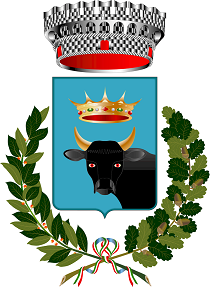
The territory was inhabited by Torella Osci and Samnites, who unfortunately left no tangible signs on the territory. With the conquest of the Romans and the division of land to his veterans Irpinia, the Oscan was replaced by Latin. Post on the Appian Way, which connected Rome to Brindisi, the city was dubbed Queen viarum, and we witnessed a gradual development of civilization. The discovery of coins and funerary objects, and the presence of funerary inscriptions are proof that the Romans lived for a long time the lands of Torrella.
After the raids of the Goths, the territory was affected by the presence of the Lombards, who conquered Conza, elevating it to a steward. In fact, in 848 AD, the principles Siconolfo Radelchi and signed in the presence of the emperor, a treaty which sanctioned the division of Lombard duchy in two principalities: that of Salerno, who owned the steward of Conza, and that of Benevento ( frigento marked the border of the two principalities). To defend these boundaries Prince of Salerno built several fortresses in Guardia Lombardi, Sant’Angelo dei Lombardi, Monticchio and Torella, while the Prince of Benevento built for his defense castle of Rocca San Felice. Torella found itself to have its own castle, a feudal lord and a vassal dependence of the Prince of Salerno until 1076 AD, when it was conquered by the Normans of Robert Guiscard. The twelfth came under the rule of the Saracen; but, nel1529 Sigismund Saraceno, husband and father of Hippolyta Carafa of eight children, he squandered all the assets of his family and was forced to put up for sale all of its assets, including the feud of Torella, who was bought by Caracciolo.Costoro , awarded the title of Princes of Torella, led the city for four centuries. In 1889 Umberto I granted the title of Marquis of Candriano Joseph Caracciolo, who died childless in 1920. The noble title and the castle-palace went to the nephew Camillo Ruspoli, who died in 1940, and in 1959, his widow donated the property to the City.
The etymology of the name by which it originates Torella, has always aroused great curiosity and various theories have been involved in this respect: According to some, the name comes from the pagan ritual of Osci to sacrifice bulls; according to the tales handed down to us by Livy, young Samnites, to find new lands where to build their homes and create a new community they were guided by the bulls, who would then killed in honor of the gods. For this reason we think that all countries in their names cross referenced to the bull sacrificed to have originated from this phenomenon.
Another explanation of the name Torella may stem from the river running through it, the Ofanto, defined by the poet Horace in his Odes “tauriforme” that is hasty and violent as a bull. Latest appears to be the legend of the “indomitable bull”: a merchant, because of his work, he had to cross a country road inhabited by an indomitable bull that threatened and sometimes killed those who were passing by, so the hapless vowed to Madonna that if he came out safe and sound from this situation would have dedicated a church. So it was in fact the man and built a church dedicated to Our Lady of perillo or danger whose ruins are still visible below the castle. This was the first church built in Torella and it is said that he had gathered around the first urban called Torella, because the bull tamed. In 1862 the name was built in order to avoid the confusion of the City Irpinia with other namesakes.

 Add to favorites
Add to favorites